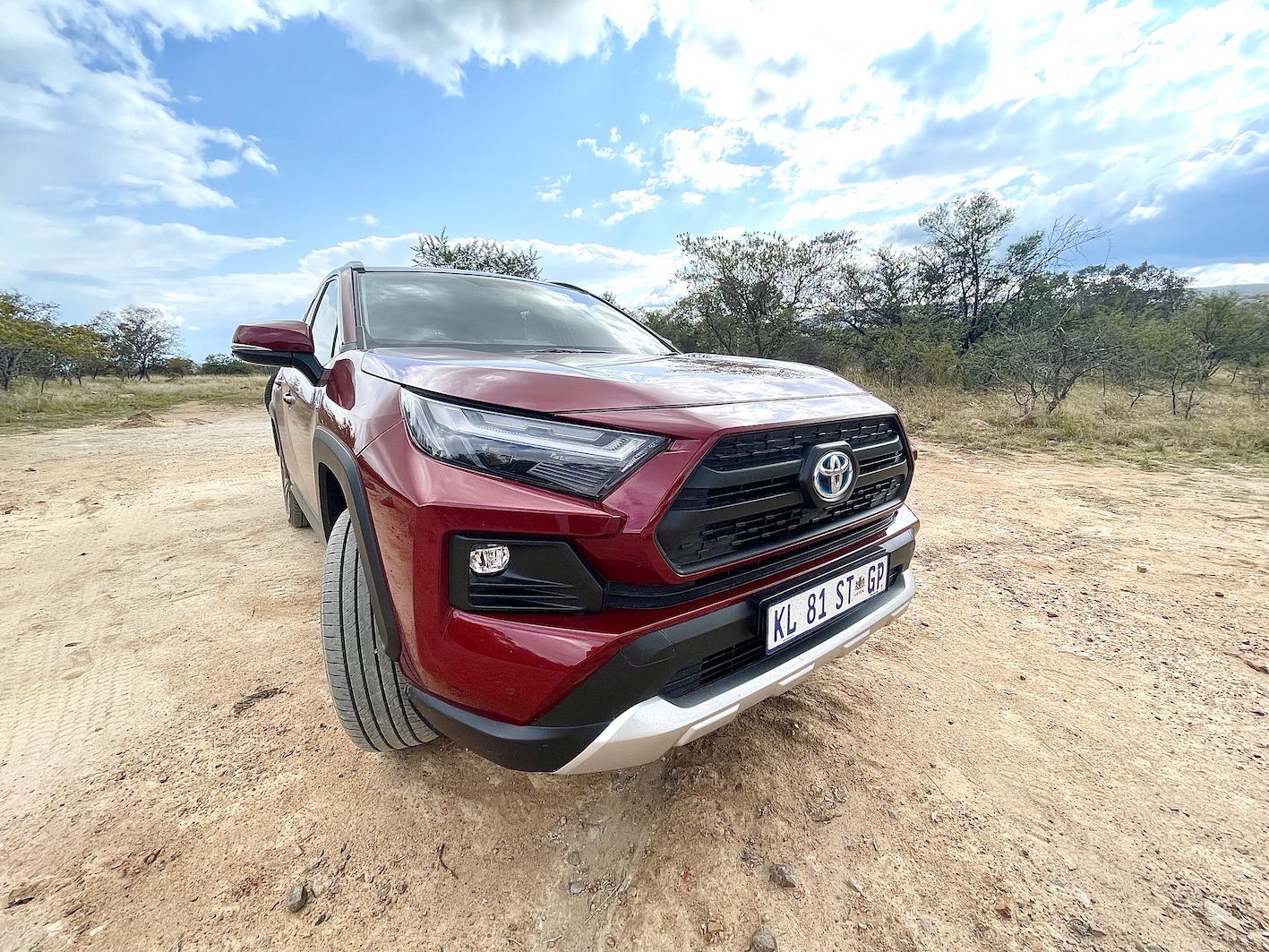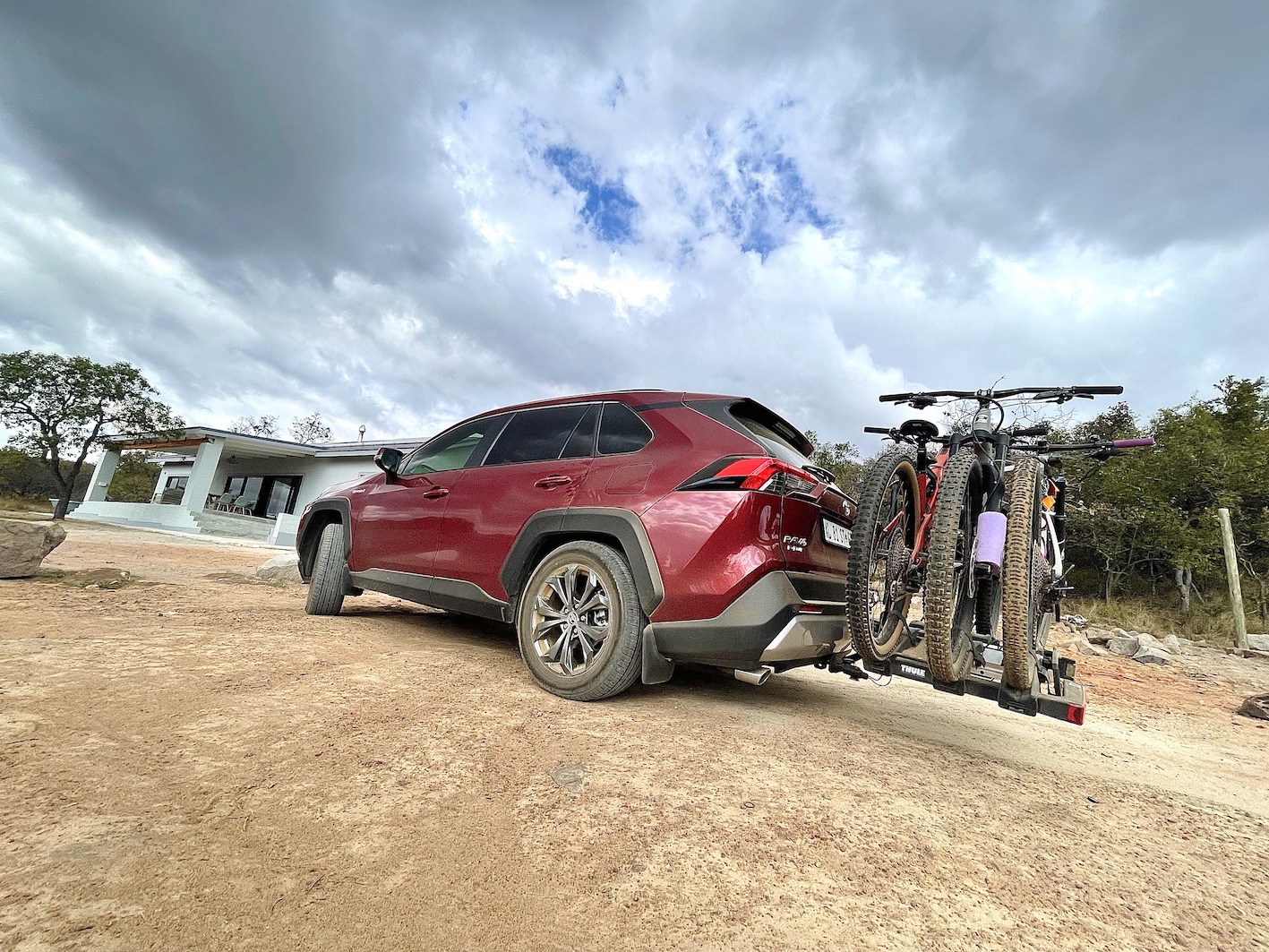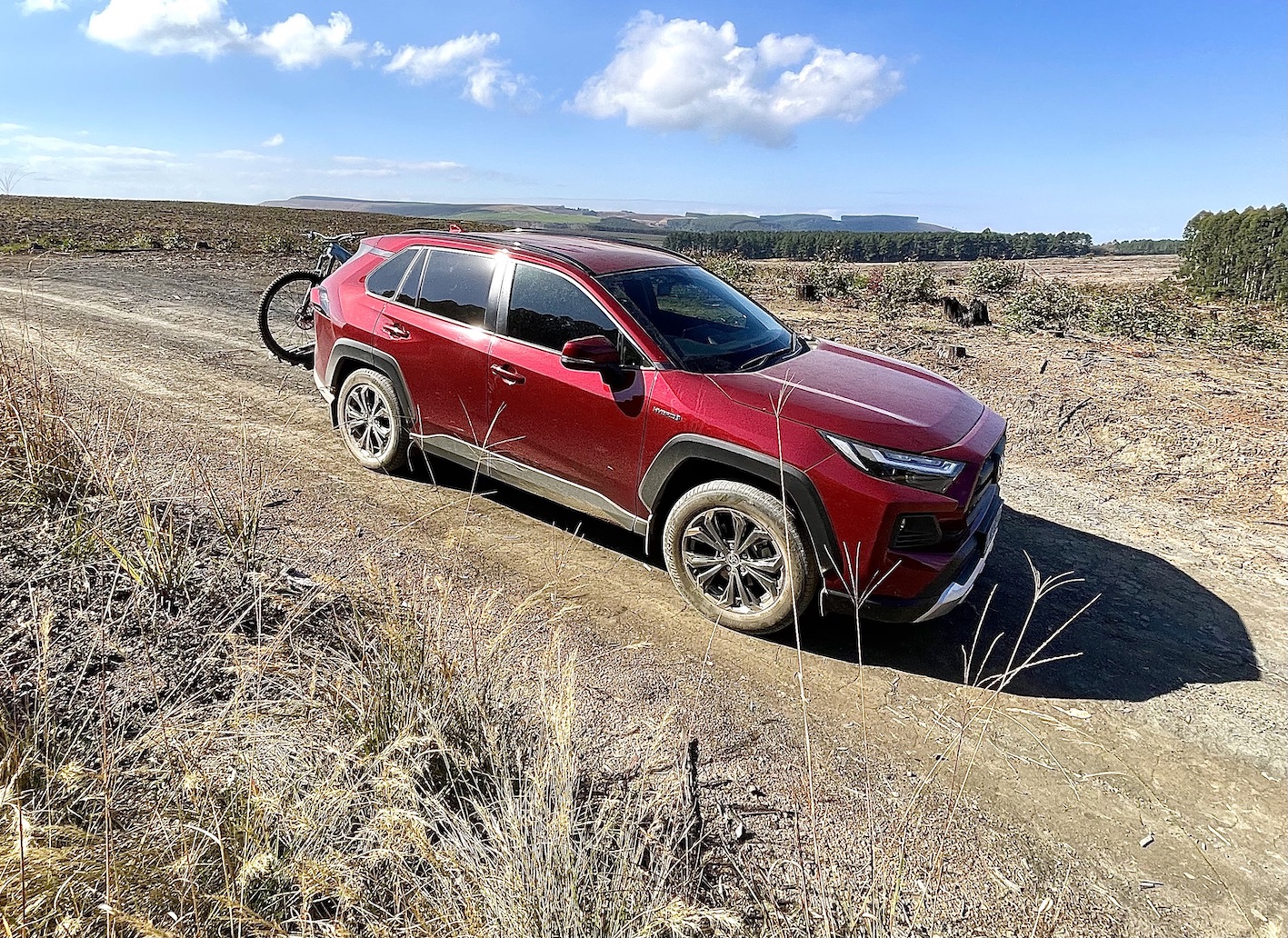When new technology comes along it can be unsettling. Partly because we’re so accustomed to what works and partly because we don’t yet understand the new technology. We know that the world is moving away from petrol- and diesel-fuelled motor vehicles and embracing electric vehicles. But we’re also well aware that electric isn’t necessarily the best solution for everyone, especially if you live in South Africa. But what about Hybrid? It’s not electric and we’re okay with that. Here’s why…
For nine months our TREAD and Top MTB Trails team drove around South Africa in a Toyota Hilux Double Cab 4×4 bakkie. Man it was a beast! Space-wise it was very good. It had a retractable aluminium bin cover, which allowed us to pack our bags and gear inside. It had a 2.8 litre engine, which was ridiculously powerful and it was super luxurious, with every optional extra you can imagine!
But as the fuel price started to rise, our trips started to cause us some anxiety because our business income didn’t rise simultaneously… You know that feeling, right? So we became more discerning with our trips. We weighed up the importance of each trip and determined whether or not it was worth the cost. Crazy!
Then, one day, our beloved Hilux was stolen! We were pretty gutted to be honest. Not only did they take that beautiful beast of a bakkie, but on the back was a R90 000 bike on a R23000 bike rack, while inside was some of our essential, much valued gear from Oakley and Specialized. Fortunately, insurance covered most of the losses, but we felt so violated and frustrated because unfortunately, vehicle theft is a big (dodgy) business in South Africa.

We need to rewind a bit to a year ago when Toyota South Africa confirmed they’d be sponsoring us a with a vehicle. They were keen to get us into a Hybrid, but the particular model that was most suitable for our needs, the Rav4, wasn’t able to tow a trailer. And on our long trips, we have to take a trailer because four riders with four bikes needs a lot of riding gear, tools, spares, pumps etc…
“But the newer Rav4 Hybrid model, which will be available in a few months, will be able to tow,” said Clynton, our enthusiastic contact at Toyota SA. So in the meantime, he arranged the Hilux for us, which was always meant to be temporary until a newer Rav4 Hybrid arrived. Anyway, the Hilux was stolen in May and the Rav4 Hybrid replacement was quickly arranged.
Initially, our team was tentative. But after just a few drives, we started not missing the Hilux as much, especially when we drove for an entire week without having to add any fuel! We also found ourselves fascinated by the live graphic image on the dash that shows when the Rav4 is using fuel from the engine up front and when it’s using power from the electric motor at the rear. And when it’s using some of each simultaneously!

Unlike any fully electric vehicle, you don’t need to charge the electric motor of the Toyota Hybrid. It self-charges while you are driving, mostly on downhills when you’re not accelerating. We know this because the live graphic on the dash illustrates this happening… It’s very clever. In a country where power cuts can happen as a matter of consistency and it’s hard to keep your phone charged, not having to charge your hybrid car is rather a bonus.
We haven’t yet done a trip with a trailer in the Rav4 Hybrid, but based on the ridiculous power of this vehicle (it has a 2.5-litre engine), it will be a breeze. We do miss the ground clearance of the Hilux, but we’ve really come to appreciate the incredible fuel efficiency of the Rav4 Hybrid. It’s also a lot more spacious inside than it appears from the outside, both for passengers and luggage.

Our last trip was a 3-hour drive to Summerplace Game Reserve in Limpopo (we’re based in Johannesburg) and we used 5.9 litres per 100km. Our 5-hour trip to Karkloof, KwaZulu-Natal in June was 6.7 litres per 100km. The battery is used mostly when revs are low and speed is low, which is largely town driving. If you’re not an aggressive driver, you can also keep revs lower on longer trips to encourage more battery power usage too.
The Rav4 Hybrid is an always-on all-wheel drive. It’s largely front wheel-driven by default but the back wheels engage when necessary and you can see it happening on the groovy live dash graphic too! And when you hit gravel roads, there’s a Trail setting button that you can engage which transforms the way the vehicle finds its traction. There’s obviously some term for this, but we’re bike nuts, not car nuts, so don’t know what it is. All we know is that driving a Hybrid has been an incredibly positive experience!
Find out more about the Toyota Rav4 range, which starts from R624 800, here.
Find out more about Toyota’s Hybrid technology, which features in Corolla, Corolla Cross, Rav4 and Prius models. here.


